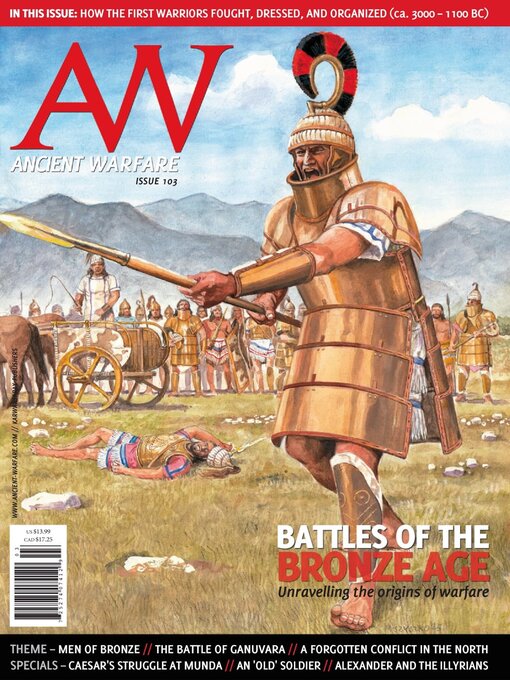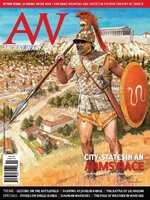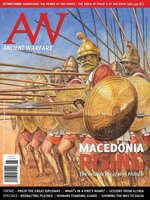Ancient Warfare is a unique publication focused exclusively on soldiers, battles, and tactics, all before 600 AD. Starting with ancient Egypt and Persia and continuing to the fall of the Western Roman Empire, Ancient Warfare examines the military history of cultures throughout Europe, the Middle East and parts of Asia and Africa. Ancient Greece and Rome receive the most frequent coverage, due both to the wealth of contemporary sources and the modern fascination with these two great civilizations. Subject-matter ranges from the familiar to the more obscure: while Alexander the Great, the Persian Wars and Caesar’s Gallic campaigns all receive regular coverage, Ancient Warfare also looks at some of the less common parts of ancient military history, from chariots as battle taxis to PTSD in antiquity.
Ancient Warfare Magazine
EDITORIAL — Early origins • NEWS ITEMS BY LINDSAY POWELL
New dig looks for evidence of the Trojan War
The sanctuary for worship of a Trojan War hero
Hittite helmet goes on display
Evidence found of siege during Second Punic War
Roman army camp found in the Netherlands
Roman shoes leave a very big impression
HAVE YOU READ? • Ancient Warfare: Introducing Current Research, Volume I
Soldier’s arm purse found at Roman fortress
HOW CAESAR NEARLY LOST TO THE SPANIARDS • After five years of civil war, Julius Caesar prevailed over his Pompeian rivals, leaving only some Republican remnants who fled to Hispania under the command of the sons of Pompey the Great. This would appear to be a mere cleaning-up operation. The sons did not have their father’s genius and their troops were inferior in number and made up of new recruits and veterans of years of Civil War. Nonetheless, with these troops, the Pompeians almost prevailed over Caesar at Munda. Caesar would expressly acknowledge that he had to fight for his life there.
Caesarian and Pompeian troop numbers
BELLUM NERONIS • The chaos surrounding the period of AD 68-69 was initiated by the bellum Neronis or war against Nero. Ironically, the man who first rebelled against Nero, beginning the Year of the Four Emperors, had never aspired to the throne himself.
Secret negotiations?
BRONZE AGE KINGDOMS AND WARFARE • The Bronze Age was a vast period of history in the Near East. It not only saw the evolution of weapons and warfare, but also the emergence of kingdoms and empires that would use warfare for their expansion and glory; from the first territorial empire under Sargon of Akkad and his successors in the 24th and 23rd centuries BC to the collapse of the complex group of regional empires of Egypt, Hatti, Kar Durniash, and Assyria ca. 1200-1100 BC.
The Hakkari stelae
DECORATED ARMOUR • The earliest iteration of what became Etruscan Culture, Villanovan Culture is named after the first find spot — a cemetery at Villanova, close to Bologna. Here, we see a typical elite Villanovan warrior from period I (ca. 960-800 BC) when bronze armour makes an appearance.
BRONZE AGE BLOODSHED • A discovery in 1996 about 120 km north of Berlin led to the excavation of one of the largest known battlefields of the Bronze Age. In the valley of the small Tollense River, a huge number of bone fragments have been excavated. Damage on these fragments suggests that a bloody and violent contest was fought on the banks of the river more than 3000 years ago.
Arrows, arrows (from) everywhere
Wounds to the front
THE HITTITES HIT BACK • The Annals of the Hittite king, Muršili II (r. ca. 1321–1295 BC using the Low Chronology) record a great battle against one of the Hittite Empire’s most implacable foes — the Hayasa-Azzi confederation. The Hayasa-Azzi king, Anniyash, invaded Hittite territory and put the city of Ganuvara under siege; the Hittite general, Nuvanzas, marched...

 AW XVIII.3
AW XVIII.3
 AW XVIII.2
AW XVIII.2
 AW XVIII.1
AW XVIII.1
 AW XVII.6
AW XVII.6
 AW XVII.5
AW XVII.5
 AW XVII.4
AW XVII.4
 AW XVII.3
AW XVII.3
 AW XVII.2
AW XVII.2
 AW XVII.1
AW XVII.1
 AW XVI.6
AW XVI.6
 AW XVI.5
AW XVI.5
 AW XVI.4
AW XVI.4
 AW XVI.3
AW XVI.3
 AW XVI.2
AW XVI.2
 AW XVI.1
AW XVI.1
 AW XV.6
AW XV.6
 AW XV.5
AW XV.5
 AW XV.4
AW XV.4